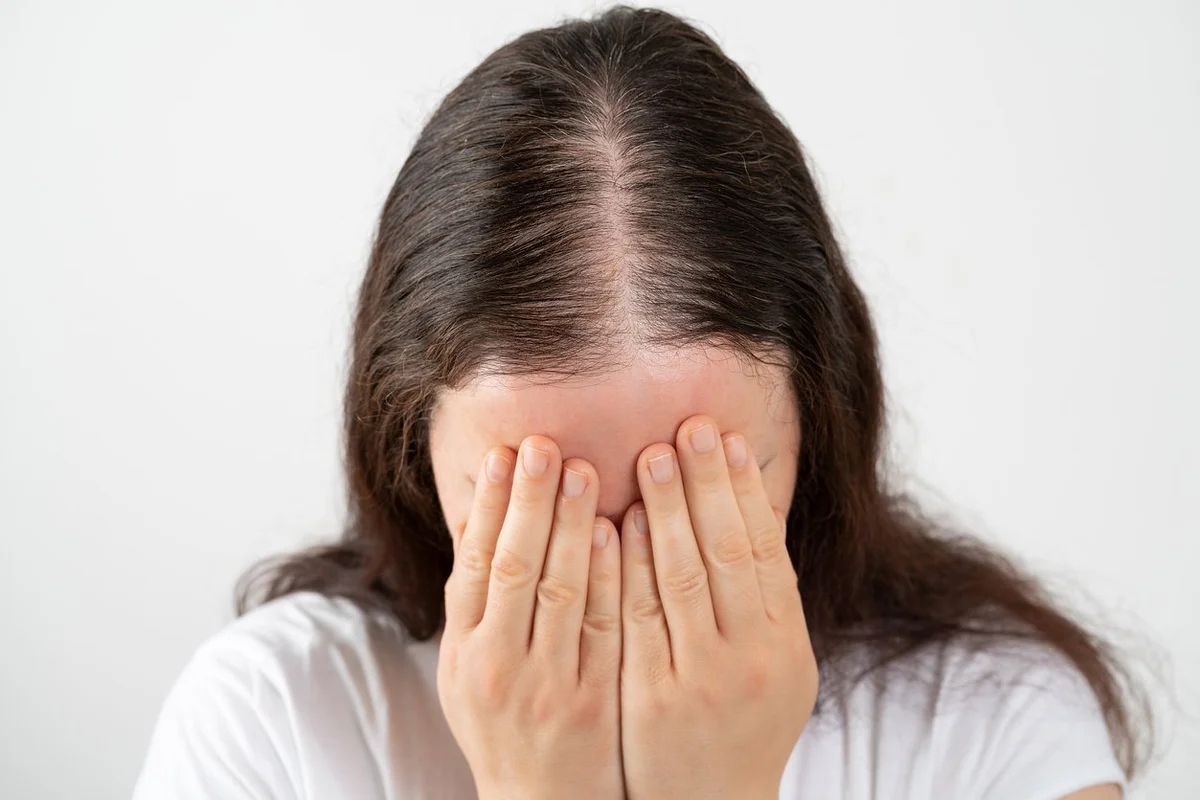I first experienced my hair going bald during the winter of 1989.
Although I knew ahead of time I’d experience hair loss due to chemotherapy treatment for breast cancer, nothing prepared me for the emotional anguish of seeing every strand become an afterthought of psychological discomfort.
After chemotherapy ended, my experience of baldness faded quickly. With spring’s promise in sight, soft downy-hairs began gracing my scalp again until eventually, I had a full head of hair again – something to celebrate and embrace as part of me again.
Today, decades later, I am still grappling with hair loss – this time due to age rather than chemotherapy – yet the unexpected shedding remains distressing. Finding handfuls of strands left behind in hairbrushes or shower drains is disheartening and must stop immediately!
Hair loss affects one-third of female adults during their lives; although natural attrition naturally sheds around 100 hairs daily, age and other factors can speed up or delay its regrowth.
To address the root of the problem, we spoke with Elizabeth Liotta, M.D., a board-certified dermatologist and member of HealthyWomen’s Women’s Health Advisory Council about hair loss treatment options available if assistance is required.
Who Is Affected by Hair Loss? Any woman can be affected by thinning or loss, especially as she approaches age 40 when hair growth slows and hair follicles stop producing new hair follicles.
Liotta noted, “Hair loss or thinning is extremely traumatic to women’s sense of beauty, so losing or thinning hair can be devastating.
What Causes Hair Loss in Women (WLH) There can be numerous causes for female baldness besides age or chemotherapy, such as:
Androgenetic Alopecia. Also referred to as Female Pattern Baldness, Androgenetic Alopecia is a common form of hair loss which follows a specific pattern; in women this involves widening of partings over time and thinner top and crown regions of scalp hair.
Stress. Physical and emotional strain from chronic illnesses, injuries and relationship difficulties may contribute to temporary hair loss by coaxing hair follicles into entering an inactive resting phase and ceasing production of new hair strands – this condition is known as telogen effluvium. “When stressed out,” Liotta explained, the phases of hair growth “become disjointed.”
Medication. Hair thinning or loss can be an unfortunate side effect of certain medications such as blood thinners, blood pressure medications and antidepressants.
Birth. After giving birth, estrogen levels decrease and your hair goes through its resting phase of growth. Shedding typically peaks about four months postpartum; for most women it should return within one year.
Menopause or hormonal imbalance. Lowered estrogen and progesterone levels can result in elevated androgens (male hormones), leading to shrinking hair follicles which could result in finer, slower-growing locks with rapid hair shedding rates.
Vitamin deficiencies. An insufficient supply of biotin, iron or zinc may interfere with hair follicles and lead to the thinning or loss of hair follicles, potentially causing them to thin or fall out altogether.
Hair dyes and other processing agents have the ability to overprocess hair, leaving it vulnerable to breakage, damage and possible loss.
Traction Alopecia/Traumatic Alopecia. Over time, wearing tight braids or other forms of styling that pull tightly away from the scalp can lead to damage and hair loss, but don’t fret: most often it will return once you switch to gentler methods of haircare!
Alopecia areata is an autoimmune skin condition in which your immune system attacks its own hair follicles and causes them to shrink or fall out altogether. Sometimes hair will grow back on its own while other times corticosteroids or other treatments may be necessary to stimulate growth of new follicles.
Read: “How I Learned to Accept and Love My Bald Self”
Thyroid Disease. Hyperthyroidism or hypothyroidism, two conditions involving an imbalanced thyroid, can result in hair loss; this form is reversible by treating its cause.
Genetics. Both men and women can inherit genes for hair loss from either their mother, father or both parents that affect the hair follicles. These may come from one or both sources.
Covid hair loss. Prolonged illness such as Covid-19 can act as a stressor and drive more hairs than usual into their shedding phase (known as telogen effluvium). Hair begins falling out two to three months post illness, lasting six to nine months until finally stopping.
How can you identify what’s causing your hair loss?
Since there could be multiple causes for it, Liotta recommends seeking assistance from a healthcare provider (HCP) to accurately diagnose what’s happening with you.
Your HCP should review your medical history, medications, nutritional status and hairdressing habits (dyes, gels, relaxers and hot irons), in addition to conducting a physical exam and performing blood tests or biopsies of the scalp to gain more insight into why your hair loss or baldness might be occurring.
Hair Loss Treatments
While certain cases of hair loss can be reversed or prevented altogether, permanent causes can sometimes make permanent hair loss more likely. Common treatments for this issue are:
Topical or oral minoxidil, Spironolactone, Hair transplants, corticosteroids immunotherapy JAK inhibitors and antiandrogens may all help.
Low-level laser therapy or platelet-rich plasma (PRP) treatments may offer relief.
Are natural remedies for hair loss effective? Many people swear by natural hair loss remedies like saw palmetto, iron, onion juice or pumpkin seed oil as possible solutions. Although studies show promising results for these natural treatments but numbers remain small and more research needs to be conducted in order to ascertain if they actually work; additionally it should be noted that too much Vitamin A, E and selenium could actually cause hair loss in excess quantities.
If you are experiencing hair loss, take steps to address it gently by eating healthily and consulting your HCP for recommendations and treatment solutions.
